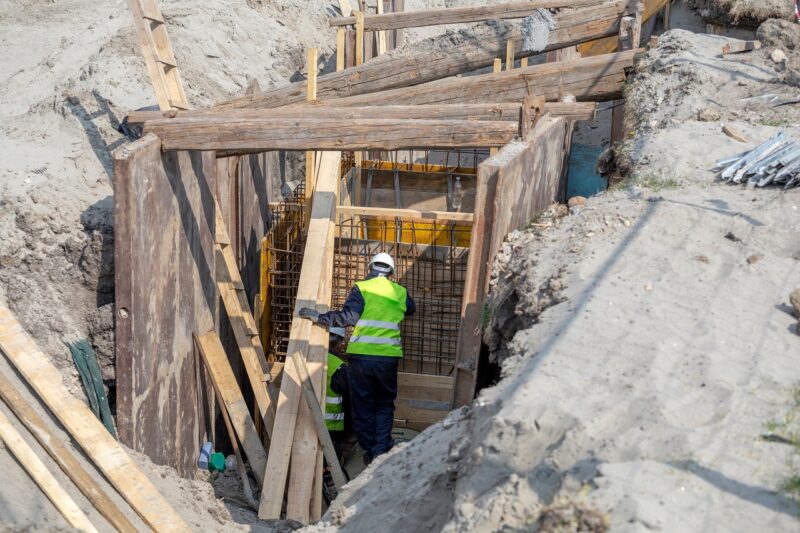Published: 20/02/24 By: Mike Bekin
At EcoChoice, we supply timber for a wide range of uses, the most notable being decking and cladding. But did you know that we also work to provide timber for the oil and gas industry? Introducing sustainability to these sectors in the form of a renewable material, our experts can bring the right species and specifications to projects which rely on technical detail.
Interested? Let’s take a closer look at the role of timber in the oil and gas industry.
How Timber is Used in the Oil and Gas Industry
We provide a variety of species to the oil and gas sector, with our timber products being used for a variety of applications. These include:
- Bog mats and support saddles
- Pipe racking
- Crane boom rests
- Dunnage
We also work with companies and constructors to bring bespoke timber products to small and large-scale works. If you do not see what you need on this list, do not hesitate to get in touch with our team and we will be happy to chat about how we can find what you require.
A Closer Look at Oil and Gas Timber Applications
Unless you are an industry professional, the timber applications in the oil and gas industry might sound like little more than jargon. So, what are they?
Bog mats and support saddles are used on the construction sites to protect both the ground and key components for the oil and gas pipelines. Bog mats are laid on the ground to take the weight of heavy machinery, preventing the earth from becoming churned up and damaged. Support saddles cradle pipeline components (including the pipes themselves) to ensure stability and prevent the risk of ground-contact damage.
Pipe racks are large, supportive structures used to stabilise pipes, drills and electrical components, such as wiring. Usually they are made of metal, but they also need durable timber beams to create firm foundations for the racking.
Crane boom rests are features which can be built from strong timber to hold the lifting component of cranes into place. A crucial safety feature which adds precision when using the crane, preventing swinging and swaying, it is essential for the technical accuracy needed in the oil and gas construction.
Timber is also used to support the digging works frequently seen in the oil and construction industry. When trenches are dug, timber planks, boards and pallets are used to build structures which hold the earth back, preventing landslides and slips.
Dunnage for Safe Component Delivery
Dunnage is a little different to the timber applications mentioned already. Rather than being a part of the construction, dunnage is used in the shipping process to protect crucial products in transit. Usually scrap or recycled timber is best for this purpose, providing a sustainable and durable shock absorber which will stop important components from being knocked before they reach the construction site.
Why is Timber a Key Construction Material?
Timber has always been used in the world of oil and gas construction. It is light, strong and cheap, yet malleable enough to protect expensive components. It also brings a sustainable aspect to an industry which is not known for being green, using a renewable, biodegradable material which does not pollute the land around the construction site. This is particularly true when using responsibly sourced timber, such as the FSC and PEFC-certified durable species such as Ekki, Opepe or Greenheart from EcoChoice.
Also a lot of timber species are also incredibly durable, with the likes of Balau, Ekki, and Greenheart being strong enough to withstand heavy vehicle traffic without a splinter, and able also to deal with damp conditions without rotting. For the oil and gas industry, that hardiness is invaluable.
Find Sustainable Timber for Construction
If you are on the hunt for sustainable timber for your construction works, look no further than EcoChoice. With a wide range of species from independently certified forests, we can bring the eco-friendly timber you need directly to your building site. To learn more or start an order, get in touch with our team today.
Tags: oil and gas industry, Timber
Categories: Insights
